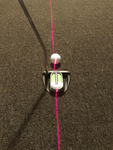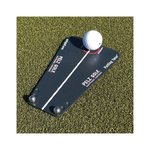- Joined
- Dec 23, 2015
- Messages
- 7,609
- Reaction score
- 4,229
- Thread starter
- #51
I think it is worth noting Gary Player's point as just seeing these two words could give people the wrong impression. Gary Player said this around 22 years ago and he very specifically was talking about some modern day professional's over-reliance on their coach. These players were getting so much input from their coach that in Gary's opinion, they had lost the ability to make decisions on their own and totally disregarded what he called the instincts of the player. Some of these coaches were now traveling to the tournaments to coach the player during the tournament. Gary was bemoaning these player's inability to make decisions on their own.Gary Player said it best: Analysis, paralysis.
I don't see many of us having coaches follow us around all the time giving input. That would be really EXPENSIVE. But I do think there are a few relevant lessons in what Gary said. The kind of coaching we need has to be the kind that enables us to make good decisions on the golf course, and if we have good instincts about some of those decisions, it should include those good instincts as part of the decision-making process. Moreover, improvement in any part of our game should have the byproduct of INCREASING the confidence we have in the decisions we make. Being committed and focused on a course of action in and of itself produces better outcomes.
If you are interested in a contemporaneous article on what Gary said, here's one that was pretty good. https://www.independent.ie/sport/golfers-suffering-paralysis-by-analysis-26155768.html








